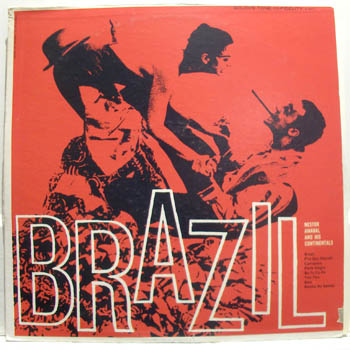So what I’d love to know is how the real Rose Hobart felt upon seeing Joseph Cornell’s 19 min homage to her in the short film consisting primarily of clips from the 1931 film East of Borneo. You’d imagine, like most celebrities stumbling upon fan videos of themselves, that she would feel flattered, perhaps find it funny, and be generally a bit weirded out by what she was seeing. But we can’t really know exactly. Afterall, she was the first victim of a fan video obsession and the subject of the first film of its kind.
So is it a fan video? Or is it the surrealist wonder that it was first perceived as at Julian Levy‘s New York City Gallery in 1936, that had the great Salvador Dali in a rage over the fact that Cornell had apparently stolen the idea from his subconscious?
The fact that I’ve already used the word “obsession” to describe Cornell’s affiliation with the actress probably shows my leaning towards it being a fan video, although on the other hand, filmmakers very often become obsessed with the subjects of their films, which might even be a style they are trying to capture, so we can’t immediately associate Cornell’s obsession with this being a fan video. So the main aspect that really intrigued me was the choice of music. What’s difficult to determine is how deliberate Cornell’s selection of Nestor Amaral’s ‘Holiday in Brazil’ was, to accompany the clips of Rose Hobart. With the inclusion of the crackle in between tracks the accompaniment plays like an unrelated record on in the
 background. The first song is so distant in mood and theme from the images. The Brazilian, perky, march-like music emphasises observing and distancing the viewer from the montage, aligning the film with surrealist art. However, the second song seems to lend itself nicely to the images and reinforce Cornell’s sexual and sensual affiliations with Rose. The soundtrack also has a slightly exotic feel which awkwardly echoes the jungle setting depicted on screen, perhaps suggesting that, rather than distancing the viewer and promoting observation, Cornell has clumsily tried to match some of the music with the shots. Something that subconsciously aligns this film with the surreal for the viewer is the fact that while the songs repeat as though a record which keeps going around and around, the songs aren’t in exactly the same order in which they were first played; the first song is omitted in the repetition.
background. The first song is so distant in mood and theme from the images. The Brazilian, perky, march-like music emphasises observing and distancing the viewer from the montage, aligning the film with surrealist art. However, the second song seems to lend itself nicely to the images and reinforce Cornell’s sexual and sensual affiliations with Rose. The soundtrack also has a slightly exotic feel which awkwardly echoes the jungle setting depicted on screen, perhaps suggesting that, rather than distancing the viewer and promoting observation, Cornell has clumsily tried to match some of the music with the shots. Something that subconsciously aligns this film with the surreal for the viewer is the fact that while the songs repeat as though a record which keeps going around and around, the songs aren’t in exactly the same order in which they were first played; the first song is omitted in the repetition. Another reason why Rose Hobart could be distinguished as both fan video and surrealistic short film is the way in which it plays out like a dream sequence, or more accurately, Cornell’s day dream musings. The clips of Rose Hobart are highly romanticised; edited with a blue tinge and slow motion effects. Through Cornell’s obvious avoidance of the other characters in East of Borneo, it’s as though he is superimposing himself on the receiving end of Rose’s gazes and dramatic looks. Repetition of certain scenes and images further reflects the idea of the film as a projection of the filmmaker’s personal imaginings. It dwells on certain images which have clearly stuck in Cornell’s mind.
With elements of both the fan video and surrealist film, there is probably little point in trying to determine exactly what Joseph Cornell’s Rose Hobart is. It does, however, go to show how editing and a change of music can so greatly effect the message of the film.
Two particularly funny examples:

The way you speak about, and unpack, the music in Rose Hobart is really interesting - the music was something I couldn't quite get my head around at first because it seemed so strange and disconnected from the image. You speak about it well.
ReplyDeleteThat Mary Poppins clip is unreal - the things you can do with editing software! Completely transforms the film - like a disturbance or rupture in the cinematic heterotopia
Both examples of films (Mary Poppins and Harry Potter) that have been cut and edited to represent something completely different are affirmation of the fact that any footage can be remixed into whatever the creator fancies these days. The Harry Potter clip was particularly hilarious - with the right sound bites and intertitles, anything can be fashioned into something completely different. The unfeasability of each of these examples (although some would disagree) makes them all the more amusing.
ReplyDelete